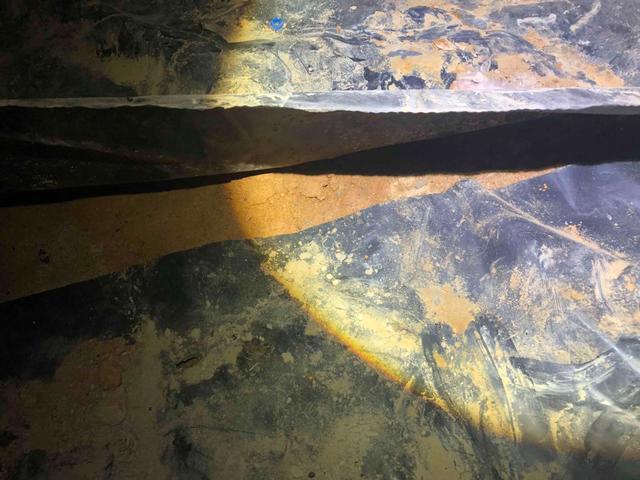
Unsealed 6-mil ground cover
Most crawl spaces have a 6-mil vapor barrier on the dirt. It is about the thickness of a trash bag and is unsealed at the seams or to the walls and piers and often is staked down creating additional holes in the liner. These gaps and holes that are unsealed allow moisture from the ground to get into the crawl space and affect the joists, insulation, and cause mildew/mold growth.
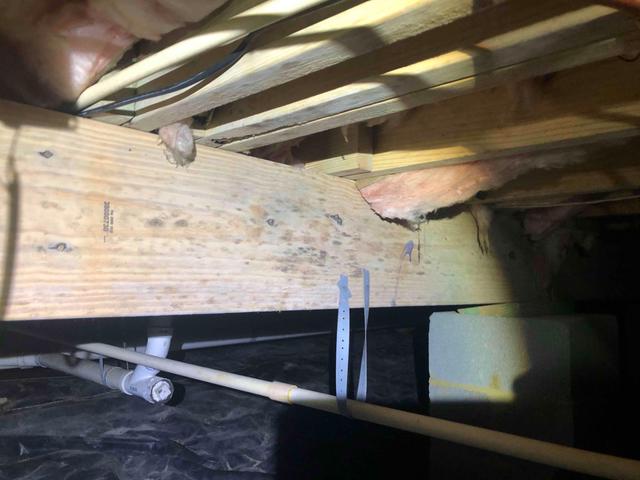
Mildew/Mold Growth on Floor Joists
As the relative humidity in the crawl space increases in warmer months, we often see mildew/mold growth on the joists and paper backing of fiberglass insulation. This affects the air quality in your home, you may also notice musty odors, or that your living space seems humid.
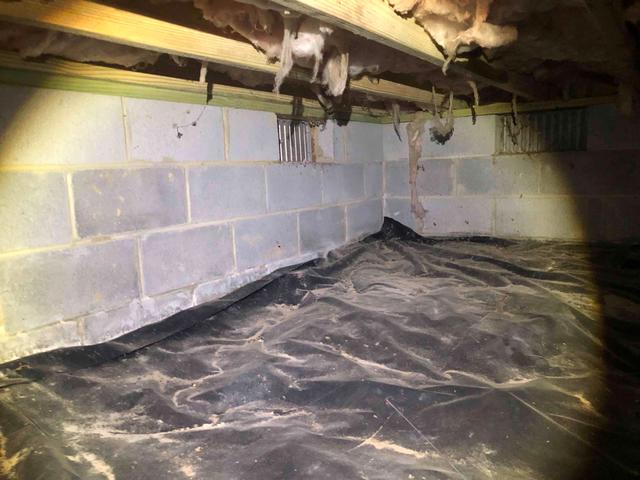
Vented Crawl Spaces and Falling Insulation
A vented crawl space allows air carrying moisture to flood into the crawl space in hot humid months. As the relative humidity increases and condensation occurs, the floor joists and fiberglass insulation soak up this moisture. The Fiberglass becomes heavier as it takes on water and the material begins to delaminate, or separate its layers. Along with the help of gravity, the insulation begins to fall leaving you with cold floors in the winter months, and drafts.
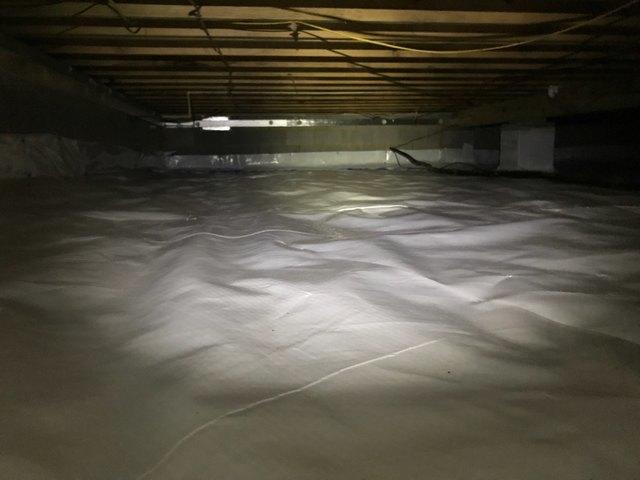
Insulating Crawl Space Walls
The Crawl Space walls are prepared to be insulated with Closed Cell Spray Foam. We have installed a strip of foam board insulation two inches below the top of the foundation wall. This is in place to ensure that when our technicians apply the spray foam insulation to the walls, it will leave a clean viewing strip, per Virginia Building Code, for termite inspectors.

Wrapped Piers in the Crawl Space
Wrapping piers and sealing the CleanSpace to the piers is an important step in keeping out moisture from the earth. Moisture can find its way through porous blocks such as foundation walls or piers, so wrapping and sealing piers helps deter moisture from entering the crawl space.
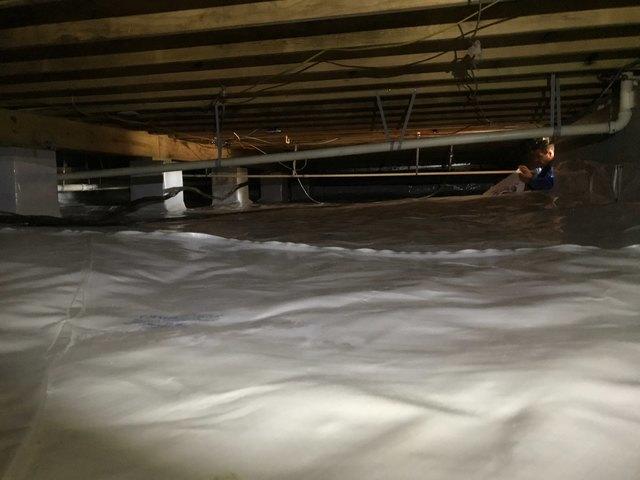
Heavy-duty Vapor Barrier in Crawl Space
The CleanSpace vapor barrier is a durable liner, similar to a pool liner. It is tough enough to withstand service persons crawling and working in the space, and you can store items without worrying about damaging the liner.


